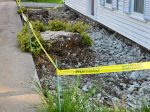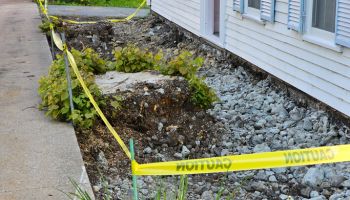Venice, Louisiana (CNN) — On day 46 of the Gulf of Mexico oil spill, BP, at last, began to siphon oil Friday from the ruptured undersea well to the surface, where it was flowing onto the awaiting drill ship Discover Enterprise.
As the recovery process started, BP said it would shut four vents on top of a containment cap from which oil was still escaping into the ocean. The company hoped that closing the vents would greatly reduce the amount of gushing crude.
But no one could say with any certainty whether BP’s latest effort to contain and recover the oil would succeed. U.S. Coast Guard Adm. Thad Allen, the federal government’s response manager, said estimates of how much oil is being captured or whether any leaks develop will be determined later Friday.
President Obama, who said he was “furious at this entire situation,” was heading back to Louisiana on Friday to get another firsthand look at the environmental damage and speak with political and business leaders.
Oil that has already affected Louisiana, Mississippi and Alabama is drifting steadily toward Florida. A new trajectory from the National Oceanic and Atmospheric Administration issued Friday forecast oil onshore as far east as Destin by Saturday afternoon.
Tar balls, tar patties and sheen were confirmed 10 miles from the Escambia County shoreline, and the primary oil plume, according to NOAA, was 30 miles from Pensacola.
“You can’t help but be passionate about Florida,” Gov. Charlie Crist said Friday about the state’s natural beauty and the importance of tourism. What was needed now, he said, was strong leadership to get through the crisis.
“You’ve got to keep a cool head in order to win a hot game,” he said.
BP remained optimistic but again warned that the containment cap had never been positioned on a ruptured well head a mile below the ocean’s surface. In a statement, the British oil giant said the system’s ability to contain oil or its continued operation “cannot be assured.”
“I think it should work,” Chief Operating Officer Doug Suttles said.
Suttles was referring to a complex underwater maneuver that BP completed Thursday night. After mixed success with cutting off the damaged pipe, BP positioned a cap over the ruptured well head, though the company was uncertain whether the cap’s seal would be snug enough to prevent oil from leaking out.
BP’s progress was received with tempered applause.
“The placement of the containment cap is another positive development in BP’s most recent attempt to contain the leak. However, it will be some time before we can confirm that this method will work,” said Coast Guard Lt. Cmdr. Tony Russell. “Even if successful, this is only a temporary and partial fix, and we must continue our aggressive response.”
The well may not be completely sealed off until at least until August, when BP hopes to finish drilling two relief wells.
“Our task is to contain the oil, ultimately to eliminate the leaking well and, most importantly, to clean up the oil, defend the shoreline and restore the shoreline where the oil comes ashore, so we return it to the original state,” said Tony Hayward, BP’s chief executive officer.
Hayward appears this week in television ads launched as part of a national campaign to restore the British oil company’s tarnished reputation. In them, Hayward apologizes and promises to “make this right.”
But protests against the oil company that sprouted this week are set to continue in several cities through the weekend. And anger continued to fester in coastal communities.
Hayward said Friday that the company will establish a separate division to manage its response to the crisis. BP has said that it has spent $1 billion so far but that it was too early to predict the ultimate financial blow.
“We’ve got considerable firepower to deal with the costs,” said Chief Financial Officer Byron Grote, referring to $5 billion in available cash, $5 billion in bank credit lines and an additional $5 billion in standby credit facilities.
The BP well erupted after an explosion and fire on the leased Deepwater Horizon drilling rig on April 20 that killed 11 people. The rig sank two days later, leaving up to 19,000 barrels (798,000 gallons) of oil pouring into the Gulf daily, according to federal estimates. BP, rig owner Transocean and oilfield services contractor Halliburton have all pointed fingers at one another for the disaster.
In Louisiana, where oily sludge has been fouling coastal marshes for two weeks, state officials said that the White House has given its blessing to a plan to dredge up walls of sand offshore and that BP agreed to fund the $360 million construction cost. But Gov. Bobby Jindal said Thursday that state officials “haven’t gotten a dime from them.”
“I’m calling on BP to step up [and] be the responsible party in fact, not just by label,” Jindal said. He added, “We’re done talking to attorneys.”
“Since the environmental implications of the projects are not fully understood, BP assumes no liability for unexpected or unintended consequences of these projects,” the company said on its website.
The Obama administration has also sent a $69 million bill to BP for the government’s efforts to help deal with the spill. The bill accounts for 75 percent of what BP owes to date, and the company has until July 1 to pay the full amount, an administration official said.















